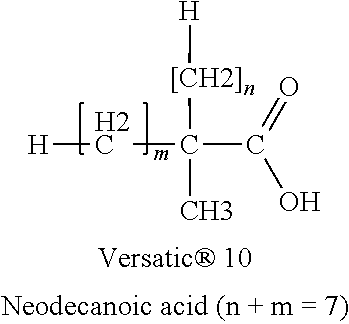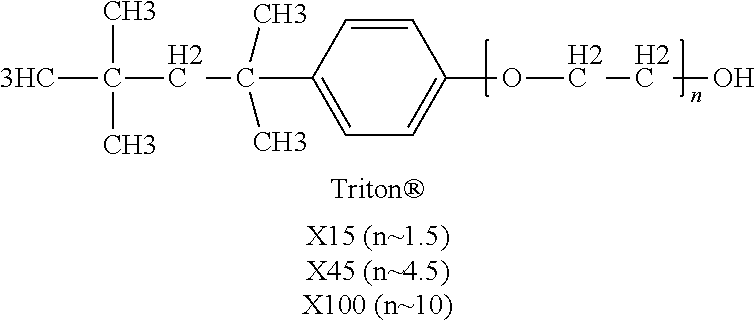Drying wet fluoropolymer resin and exposing to oxygen source to reduce discoloration
a technology of fluoropolymer resin and oxygen source, which is applied in the direction of physical/chemical process catalysts, metal/metal-oxide/metal-hydroxide catalysts, chemical/physical processes, etc., can solve the problems of thermally induced discoloration of fluoropolymer resin, undesirable color formation or increase of fluoropolymer resin, and undesirable gray or brown color. , to achieve the effect of reducing the thermally induced discoloration
- Summary
- Abstract
- Description
- Claims
- Application Information
AI Technical Summary
Benefits of technology
Problems solved by technology
Method used
Image
Examples
example 1a
PTFE, Dried with Ozone at ½ Power
[0145]A quantity of PTFE Dispersion as described above is diluted to 5 wt % solids with deionized water. The dispersion is coagulated and isolated via the method described above (Coagulation and Isolation of PTFE Dispersion). Polymer thus obtained is then dried at 170° C. for 1 hour using the PTFE drier described above (Apparatus for Drying of PTFE Polymer). During the hour of drying, 100 cc / min of ozone enriched air is introduced into the dryer. Ozone is produced by passing 100 cc / min of air into a Clearwater Technologies, Inc. Model CD-10 ozone generator which is operated at ½ power setting. Dried polymer is characterized as described in the Test Methods Measurement of Thermally Induced Discoloration for PTFE. L* obtained for this polymer is 63.7 with a change in L* of 45.6% indicating a much improved color after treatment. The measured color is shown in Table 1.
example 1b
PTFE, Dried with Ozone at Full Power
[0146]Example 1 is repeated except the ozone generator is operated at full power. L* obtained for this polymer is 65.9 with a % change in L* of 50.7% indicating a much improved color after treatment. The measured color is shown in Table 1.
example 2
PTFE, UVC, 1 wt % H2O2 on polymer, O2 Injection, 3 Hours, 60° C.
[0148]The remaining half of wet polymer obtained from Comparative Example 2 after coagulation and isolation is dried in the apparatus for drying of PTFE polymers described above with the addition of ozone enriched air. During the hour of drying at 170° C., 100 cc / min of ozone enriched air is introduced into the dryer. Ozone is produced by passing 100 cc / min of air into a Clearwater Technologies, Inc. Model CD-10 ozone generator which is operated at the full power setting. Dried polymer is characterized for Thermally Induced Discoloration. L* obtained for this polymer is 84.9 with a % change in L* of 94.5% indicating a much improved color after treatment. The measured color is shown in Table 1.
PUM
| Property | Measurement | Unit |
|---|---|---|
| particle size | aaaaa | aaaaa |
| temperature | aaaaa | aaaaa |
| temperature | aaaaa | aaaaa |
Abstract
Description
Claims
Application Information
 Login to View More
Login to View More - R&D
- Intellectual Property
- Life Sciences
- Materials
- Tech Scout
- Unparalleled Data Quality
- Higher Quality Content
- 60% Fewer Hallucinations
Browse by: Latest US Patents, China's latest patents, Technical Efficacy Thesaurus, Application Domain, Technology Topic, Popular Technical Reports.
© 2025 PatSnap. All rights reserved.Legal|Privacy policy|Modern Slavery Act Transparency Statement|Sitemap|About US| Contact US: help@patsnap.com



